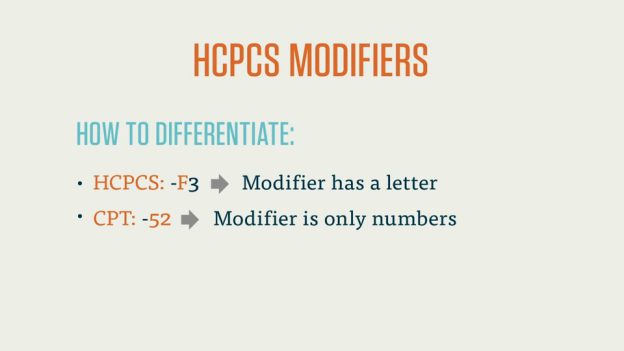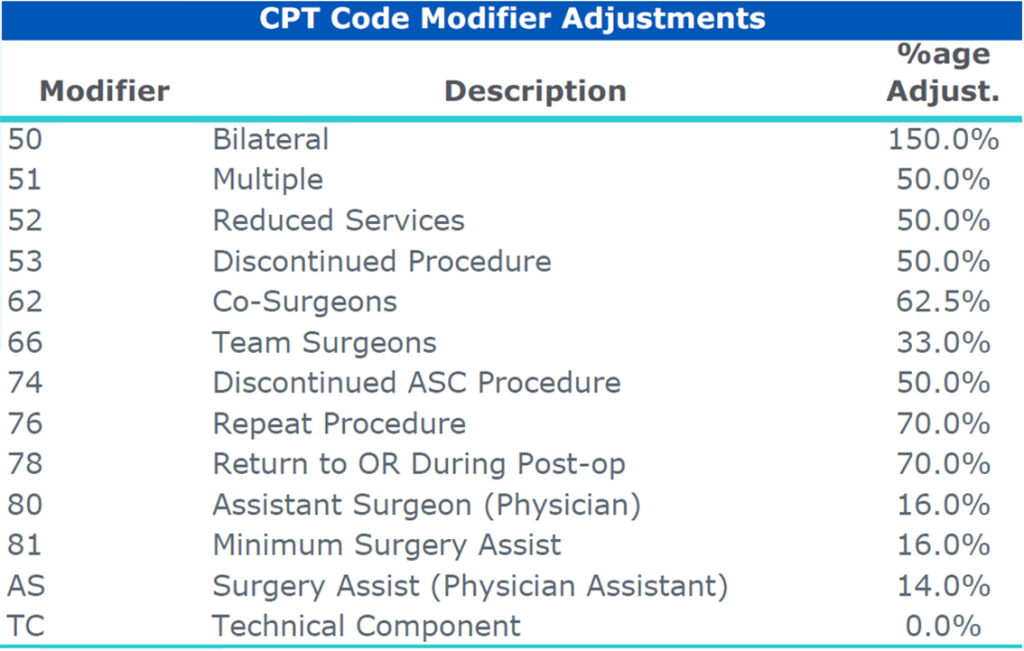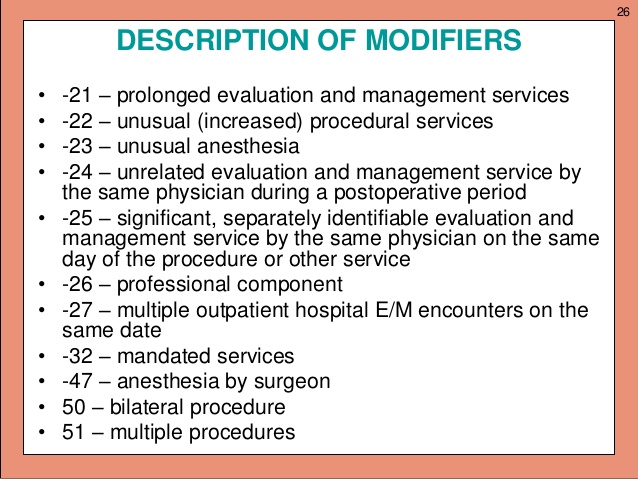In the field of EMS medical billing, it is essential to have a clear understanding of the various types of modifiers used in the process. These modifiers play a crucial role in accurately documenting and communicating crucial information regarding the services provided. By attaching the appropriate modifiers, medical coders and billers ensure that claims are accurately processed and reimbursed. This article will explore the different types of modifiers commonly used in EMS medical billing, providing a comprehensive overview of their purpose and significance in the billing process.
Introduction
When it comes to EMS medical billing, understanding and correctly applying modifiers is essential. Modifiers are codes that provide additional information to insurance companies, helping them understand the specific circumstances surrounding a medical procedure or service. These modifiers play a crucial role in accurate billing, reimbursement, and maintaining compliance with insurance guidelines.
In this article, we will explore the different types of modifiers commonly used in EMS medical billing. We will discuss the level of complexity modifiers, billing modifiers, payment modifiers, functional modifiers, and patient status modifiers. Understanding these modifiers will enable healthcare providers to appropriately convey the unique aspects of their services, ultimately ensuring proper reimbursement and documentation.
Level of Complexity Modifiers
Modifier 25 – Significant, Separately Identifiable Evaluation and Management Service by the Same Physician on the Same Day of the Procedure or Other Service
Modifier 25 is used to indicate that the evaluation and management (E/M) service provided by the physician on the same day as a procedure or other service is significant and separately identifiable. This modifier is crucial when there is a need to bill for both the E/M service and the procedure or service performed.
Modifier 57 – Decision for Surgery
Modifier 57 is used when the physician makes the decision to perform surgery. It indicates that the decision-making process for surgery was the key factor in determining the need for the procedure. This modifier informs the insurance company that the physician’s evaluation led to the decision for surgical intervention.
Modifier 59 – Distinct Procedural Service
Modifier 59 is used to indicate that a procedure or service is separate and distinct from another service provided on the same day. This modifier is crucial in cases where two procedures or services may typically be considered bundled or overlapping. By using Modifier 59, healthcare providers can communicate that the services were separate and should be billed accordingly.
Modifier 62 – Two Surgeons
Modifier 62 is used when two separate surgeons, from different specialties or practices, perform a procedure together as primary surgeons. This modifier indicates that each surgeon provides distinct surgical expertise during the procedure, and both surgeons should be reimbursed accordingly.
Modifier 66 – Surgical Team
Modifier 66 is used when multiple healthcare providers, such as surgeons and anesthesiologists, work together as a team to perform a complex surgical procedure. This modifier ensures appropriate reimbursement for the coordinated efforts of the surgical team involved.
Modifier 82 – Assistant Surgeon
Modifier 82 is used when an assistant surgeon provides necessary assistance during a surgical procedure. This modifier indicates that the assistant surgeon played a critical role in the success of the procedure. It allows for separate reimbursement for the services provided by the assistant surgeon.
Modifier 90 – Reference (Outside) Laboratory
Modifier 90 is used when laboratory testing is performed by an outside laboratory. This modifier informs the insurance company that the laboratory services were provided by an external entity and may require separate billing.
Modifier 99 – Multiple Modifiers Used
Modifier 99 is used when multiple modifiers are required to accurately report a service. This modifier ensures that all relevant modifiers are appropriately documented and understood by the insurance company.
Billing Modifiers
Modifier 22 – Increased Procedural Services
Modifier 22 is used when the complexity or extent of a procedure exceeds the usual standards for the given service. This modifier indicates that additional time, effort, and resources were required to complete the procedure. It substantiates the need for increased reimbursement due to the exceptional circumstances surrounding the service.
Modifier 23 – Unusual Anesthesia
Modifier 23 is used when the administration of anesthesia deviates from the typical approach for the procedure performed. This modifier ensures appropriate reimbursement for the additional resources and efforts involved in providing anesthesia services that go beyond the norm.
Modifier 24 – Unrelated Evaluation and Management Service by the Same Physician During a Postoperative Period
Modifier 24 is used when an unrelated evaluation and management (E/M) service is provided by the same physician during the postoperative period. This modifier communicates that the E/M service was unrelated to the previous surgery and should be billed separately.
Modifier 26 – Professional Component
Modifier 26 is used when a physician only provides the professional component of a diagnostic test or procedure. This modifier indicates that the physician’s interpretation and report are separate from the technical component performed by another entity. It allows for separate billing and reimbursement for the professional component.
Modifier 32 – Mandated Services
Modifier 32 is used when a service is mandated by regulation or payer policy. This modifier ensures that healthcare providers are appropriately reimbursed for services that are required but may not be typically covered.
Modifier 47 – Anesthesia by Surgeon
Modifier 47 is used when the surgeon provides anesthesia services during a surgical procedure. This modifier indicates that the surgeon took on the additional responsibility of administering anesthesia, warranting separate reimbursement.
Modifier 50 – Bilateral Procedure
Modifier 50 is used when a procedure is performed on both sides of the body during the same surgical session. This modifier informs the insurance company that the procedure was performed bilaterally and should be reimbursed accordingly.
Modifier 53 – Discontinued Procedure
Modifier 53 is used when a planned surgical procedure is terminated prior to completion. This modifier indicates that certain unforeseen circumstances necessitated the discontinuation of the procedure. It ensures that the healthcare provider is reimbursed for the portion of the procedure performed.
Modifier 54 – Surgical Care Only
Modifier 54 is used when a surgeon provides only the surgical care during a procedure, without the postoperative management. This modifier communicates that the surgeon’s services were limited to the surgical intervention and should be billed separately.
Modifier 56 – Preoperative Management Only
Modifier 56 is used when a physician provides only the preoperative management services, without performing the surgical procedure. This modifier indicates that the physician was involved in the patient’s preoperative care but did not perform the surgery itself, justifying separate billing.
Payment Modifiers
Modifier 53 – Discontinued Procedure
Modifier 54 – Surgical Care Only
Modifier 55 – Postoperative Management Only
Modifier 56 – Preoperative Management Only
Modifier 62 – Two Surgeons
Modifier 66 – Surgical Team
Modifier 80 – Assistant Surgeon
Modifier 82 – Assistant Surgeon
Modifier 90 – Reference (Outside) Laboratory
Modifier 99 – Multiple Modifiers Used
Functional Modifiers
Modifier G8 – Monitored Anesthesia Care
Modifier G9 – Monitored Anesthesia Care for Deep Complex, or Prolonged Procedural Sedation
Modifier 59 – Distinct Procedural Service
Modifier 76 – Repeat Procedure by Same Physician
Modifier 77 – Repeat Procedure by Another Physician
Modifier 90 – Reference (Outside) Laboratory
Modifier 91 – Repeat Clinical Diagnostic Laboratory Test
Modifier 99 – Multiple Modifiers Used
Patient Status Modifiers
Modifier 24 – Unrelated Evaluation and Management Service by the Same Physician During a Postoperative Period
Modifier 25 – Significant, Separately Identifiable Evaluation and Management Service by the Same Physician on the Same Day of the Procedure or Other Service
Modifier 26 – Professional Component
Modifier 32 – Mandated Services
Modifier 57 – Decision for Surgery
Modifier 62 – Two Surgeons
Modifier 66 – Surgical Team
Modifier 80 – Assistant Surgeon
Modifier 81 – Minimum Assistant Surgeon
Modifier 82 – Assistant Surgeon
Conclusion
Understanding and correctly applying modifiers in EMS medical billing is crucial for accurate reimbursement and documentation. From level of complexity modifiers to billing, payment, functional, and patient status modifiers, each serves a specific purpose in conveying important information to insurance companies. By familiarizing themselves with these modifiers, healthcare providers can optimize their billing practices, ensure appropriate reimbursement, and maintain compliance with insurance guidelines.



